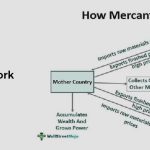Ergot is a unique fungus with an interesting lifecycle. It grows in grain crops, infecting and colonizing its host – but how does it do this? Understanding the life cycle of ergot is vital for farmers, who must prevent infestation by keeping a close eye on their crops throughout the growing season.
In this blog post, we will take a closer look at ergot’s lifecycle and discuss different ways to protect against potential issues caused by infections. Read on to gain insight into what makes this strange organism alive and how you can guard against issues caused by an outbreak!
What is Ergot?
Ergot is a fungus (Claviceps purpurea) that grows on the heads of certain cereal grains, such as rye, barley, and wheat. The fungus infects the grain by increasing into the plant’s ovary and replacing the seed with a dark, elongated mass called an ergot sclerotium. This sclerotium contains some alkaloids, some of which can be toxic to humans and animals when consumed in large quantities.
Historically, ergot-contaminated grain has been responsible for several epidemics of ergotism, a disease characterized by symptoms such as hallucinations, convulsions, and gangrene.
Today, strict regulations and inspections of grain harvests help to minimize the risk of ergot contamination. Ergot also has some medicinal uses, such as in the treatment of migraines and cluster headaches.
How Does Ergot Grow?
Ergot prefers to grow in high humidity and temperatures between 15 and 25°C. This makes the fungus particularly common in regions with cool, wet summers and mild winters. Additionally, ergot is more likely to infect cereal grains that are grown in fields with a high level of nitrogen fertilization.
Symptoms of Ergot
The ergot fungus is a destructive pathogen found in Europe and North America. Moreover, the symptoms of ergot growth include the emergence of a purplish-black sclerotium. These sclerotia are a common contaminant of the rye harvest, ranging in size from 1/16 to 3/4 inches.
When a sclerotium is infected, it grows up the grain head, usually in two stages. The first stage is called the germination stage, and the second is the flowering stage. Both stages affect the growth and maturity of the plant.
Identification& Types of Ergots
A new liquid chromatography-tandem mass spectrometric method has been developed to identify and quantify six ergot alkaloids. The technique was tested on 49 samples from the Belgian market. It was found to be highly accurate, with good precision and sensitivity.
The proposed method was validated by a 3 x 3 x 3 validation scheme. This scheme was used to assess the stability of the ion ratio and the retention time. In addition, a QC study was performed to check the stability of the solvent-based standards.
For a standard solution of each compound, 5 mL ULC-MS grade acetonitrile was added to vials. Two millilitres of the organic layer were filtered through a 0.2 uM PTFE filter.
Ergot Types
There are several types of alkaloids that are derived from the tetracyclic ergoline ring. The alkaloids produced by Claviceps sclerotium have important medicinal and agricultural applications. These include prolactin inhibitors, anti-migraine drugs, and anti-Parkinson agents.
Ergot alkaloids are classified into three groups: rugulovasine A and B, ergopeptine, and ergoamine. They have an important effect on neurotransmission and circulation.
Many species of ergot fungi produce different chemotypes of ergot alkaloids. However, it is common to find that the effects of ergot alkaloids affect cross-species relationships. For example, a fungus called Claviceps purpurea, which infects numerous grasses, commonly affects crossing species.
Detection of Ergot
Ergot disease is a fungus disease affecting many grasses, including wheat, barley, triticale, and rye. It can be a serious problem for livestock and crop producers.
The disease occurs when ergot alkaloids constrict blood vessels, causing thrombosis, which can lead to tissue death. Symptoms include gangrene, abortions, seizures, and lameness. In livestock, ergot poisoning can result in loss of milk production in lactating animals.
Insects and spores transmit the disease. Infection may occur when the right environmental conditions coincide, such as a wet spring and cool, cloudy weather.
Farmers should monitor fields for ergot growth by scouting for ergot bodies. The ergot body of a plant is usually one to five times larger than its seed.
Treatment of Ergot
Ergot is a fungus that produces alkaloids that are toxic to humans. It can cause gangrene, convulsions, hallucinations, and burning skin.
The symptoms of ergotism are different from one person to the next. In extreme cases, the toxins can cause death. Treatments for ergot growth are limited. However, a few alkaloids can be used for pharmaceutical applications.
To control ergot, the most important strategy is prevention. If a field is a source of ergot, it should be cleared before heading. Also, mowing around headlands and cutting hay at the heading stage can minimize the risk of ergot infestation.
Although sterol-inhibiting fungicides are effective in controlling ergot, they are not economical in cereal production. Another possible management strategy is to use a male-sterile line in the seed production process. This method has been used for hybrid seed production in barley and wheat.


